|
|
| . |
| . |
|
|
| . |
| . |
Maine, July, 2006
Page 2: More Pictures of Maine
LL Bean, Freeport, Maine


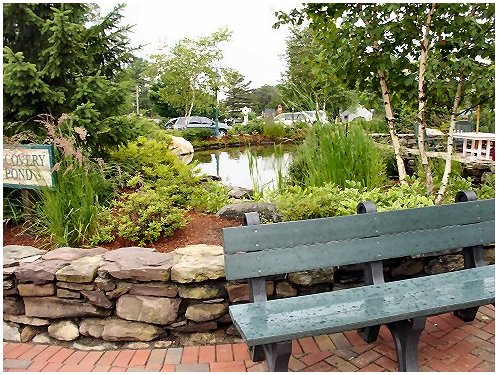

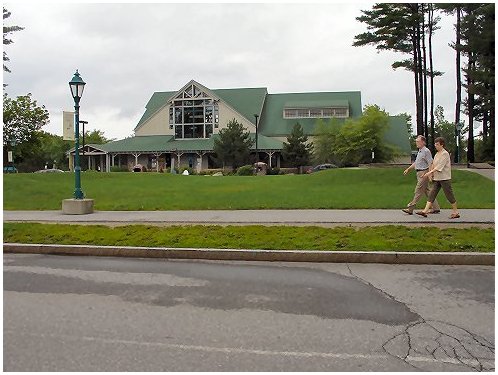

Boothbay Harbor, Maine
Burnt Island Light, Booth Bay
Ram Island Light House, Booth Bay

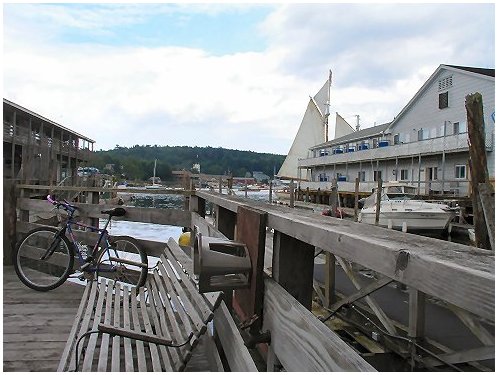
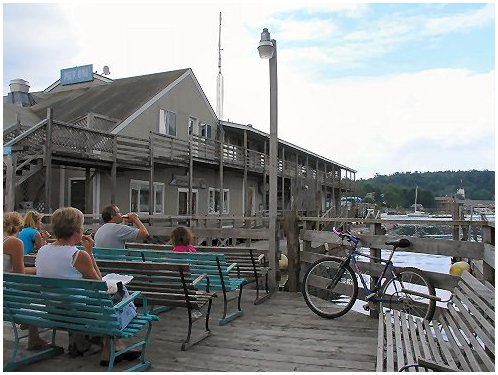
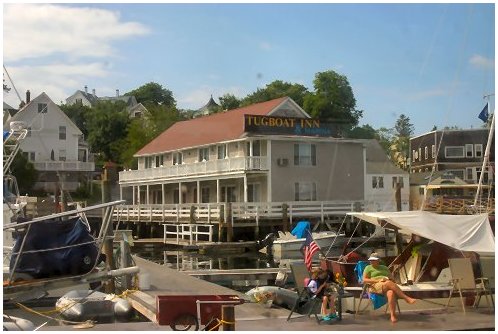


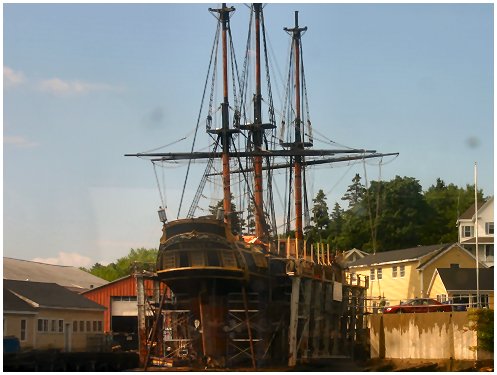
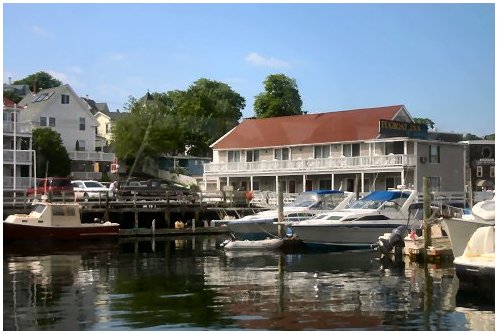
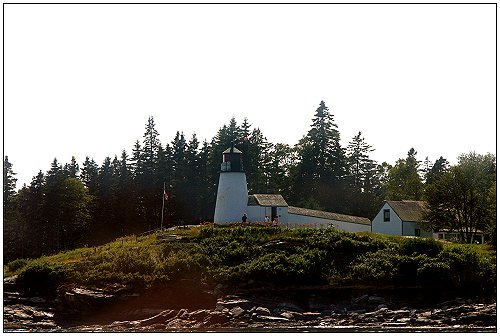
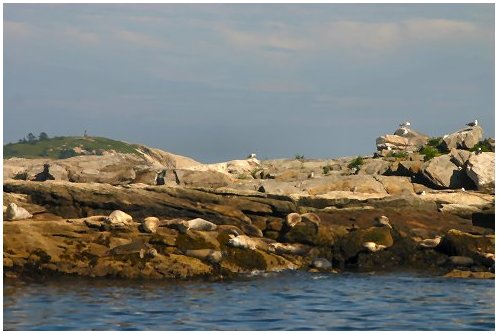


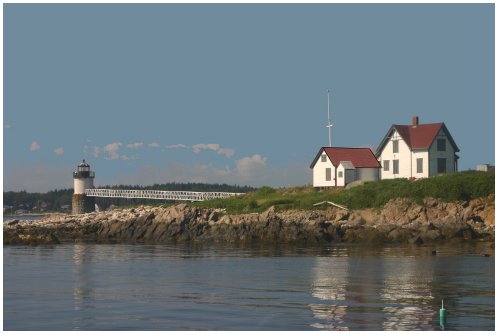

| Burnt Island Light,
Boothbay Harbor. The harbor was
a busy fishing port in the early 19th century. Burnt Island Light was
built at the west side of the entrance to the harbor in 1821, one of
the earliest lighthouses in the area. The 30-foot stone lighthouse was
accompanied by a wood keeper's house. In 1857 the house was torn down
and replaced by a 1 1/2 story cottage.
According to some sources the tower was rebuilt in the 1850s, but it appears the only change was the enlargement of the tower's lantern for the installation of a fourth order Fresnel lens. A walkway between the tower and house was also added in 1857. The boathouse and oil house that still remain were built in 1880 and 1899 respectively. A bell tower with a 1,029 pound fog bell was added in 1895. Burnt Island Light's original fixed white light had a dark sector added in 1888 so it wouldn't be confused with the light from the Cuckolds Light in the outer harbor. It was eventually changed in 1892 to its present red flashing light with white sectors that warned mariners away from dangerous areas. The white sectors were produced in an unusual way. Two arm-like devices projected from the side of the lantern, holding red glass panels with an opening in the center. The light passing through the openings produced sharply defined white sectors. For much of its history Burnt Island Light was a much sought-after family station. The island is close to the mainland and the trip for supplies was usually not difficult. In 1948, Sidney Baldwin wrote in Casting off from Boothbay Harbor :
The keepers took great pride in the attractive station. Coast Guardsman Joe Johansen, who maintained equipment at lighthouses, described a visit to Burnt Island while a civilian keeper still lived there: "We went to walk in the house to have a cup of coffee and we had to take our shoes off. You could see your face in the deck." |
|
Ram Island Light is
situated at the northern entrance into Boothbay Harbor Maine at what
is known as the Fisherman’s Island passage. Prior to the lighthouse
being built in 1883 there were several attempts by local fishermen to
provide a means of protection for boats coming and going to Boothbay
Harbor. Earlier in the 1800s
a lobsterman, having narrowly escaped death on the rocks surrounding
the island, took it upon himself to set up a lantern on the island
that would burn through out the night.
Each night he would stop on the island and light the lantern.
Although not as effective as a lighthouse, it did provide some
visual warning and he continued this practice for a few years until he
moved away from the area. Another fisherman
took over the responsibility of maintaining the makeshift light.
His light was a little more sophisticated in that the light was
enclosed in a box with glass sides.
This provided additional protection for the lamp from the
winds. He would light the
lantern each evening as he returned from his lobstering.
He continued this until he, too, moved away. Following this, a
third fisherman set up a lantern on Ram Island. His idea was to anchor
an old dory next to the island and set up a
lantern on its bow. It
was then agreed among the local fisherman that the last fisherman who
passed by the dory at sunset would be responsible for lighting the
lantern in the dory. This worked well until a storm destroyed the
dory. A fisherman that
lived on nearby Fisherman’s Island became the fourth person to take
over the responsibly of lighting a lantern on Ram Island.
He agreed to light the lantern on foggy or stormy lights.
This lantern, as it turned out, was very weak and often became
visible only after it was too late to avoid the rocks.
Shipwrecks became frequent. After some time the
man who lived on Fisherman’s Island no longer lit the lantern, and
for a time there was no light at Ram Island.
Stories abounded during this time, however, that ghosts had
taken over the job. Some
say they saw a woman dressed in white waving a flaming torch from the
shore of the island warning them in time to avoid the rocks.
Another story describes a fisherman seeing a burning boat on
the island that allowed him to steer clear of the rocks.
Upon going back to the island the next day there was no
evidence of a burned boat. Finally in 1883 a
lighthouse and keeper’s house was built on Ram Island.
The keeper’s house was built on the island and the light was
built just off-shore out on the rocks on the south side of the island.
There was a wooden walkway that connected the lighthouse to the
shore. The light house tower
consisted of a brick structure on top a granite base. Similar
lighthouse designs were built on Marshall Point and Isle au Haut.
A fog bell and bell tower were added in 1897. A boathouse and
launching ramp were built on the north side of the island facing the
narrow gut between Ram Island and Fisherman’s Island. The light became
automated in 1965. At
this time the Coast Guard moved off the island and the keeper’s
house was boarded up. The island became a
popular picnic spot but with time also became the target of vandals.
In 1975 the fourth-order Fresnel lens was stolen.
It has since been recovered and is on display at the museum of
the Boothbay Region Historical Society. In 1977 the walkway
to the lighthouse having become rotted was removed by the Coast Guard.
At the same time the keepers house received much needed
repairs. The boathouse
was destroyed in the blizzard in 1978. In 1983 the keeper's
house was scheduled to be destroyed. The Grand Banks Schooner Museum
Trust stepped in and leased the station, saving it from destruction.
The property as transferred to the Grand Banks Schooner Museum Trust
in 1998 under the Maine Lights Program. The keeper’s house has been restored by the Ram Island Preservation Society, which is part of the Grand Banks Schooner Museum Trust and in 2002 the walkway out to the light tower was rebuilt. Caretakers now live on the island during the summer. |